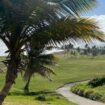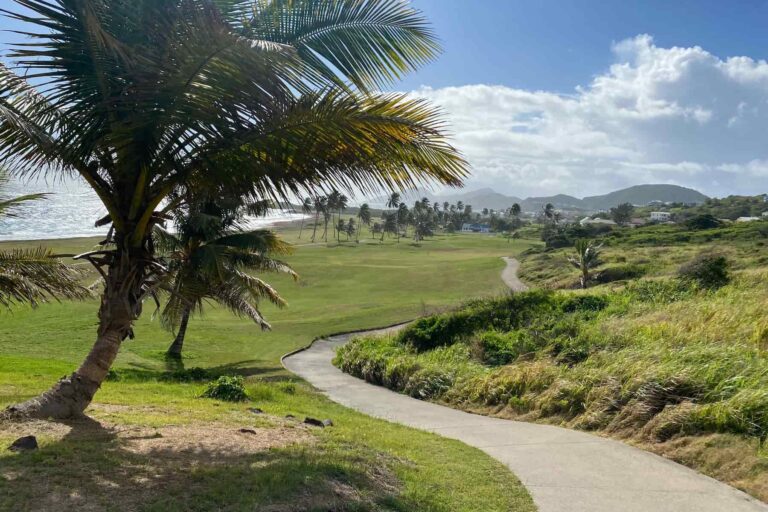
We are reader-supported and may earn a commission on purchases made through links in this article.
“Watch your step,” our guide says as we follow a narrow path up the mountainside. The trees are so thick that only narrow rays of sunshine reach the forest floor. I can hear monkeys moving in the brush, and feel droplets run off leaves left damp from a recent rain.
We haven’t seen another soul during our hike to the waterfalls at Russell’s Rest. That’s not unusual, says Baba Tyson, our guide. The island of Nevis is not crowded or overrun with tourists. There’s plenty of space to explore, and today we have the forest to ourselves.
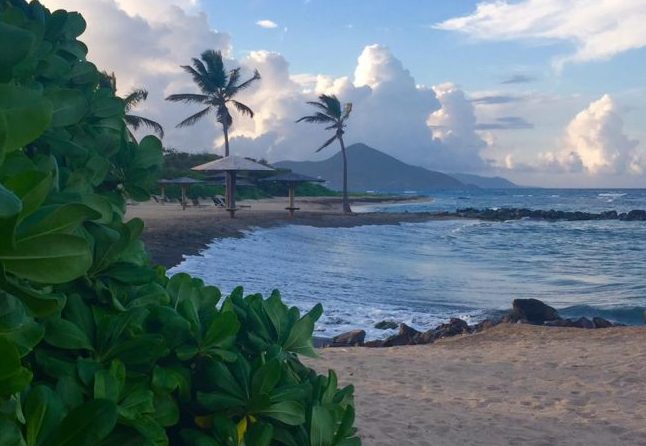
Nevis, Island in the Caribbean
Nevis is the smaller of two Caribbean islands that make up the nation of St. Kitts and Nevis. While St. Kitts is fully developed with large mansions, high-end shopping and luxury hotels, Nevis is quiet and unspoiled. Just 36 square miles in size, Nevis has no street lights or huge developments. What they do have is a small-town welcome.
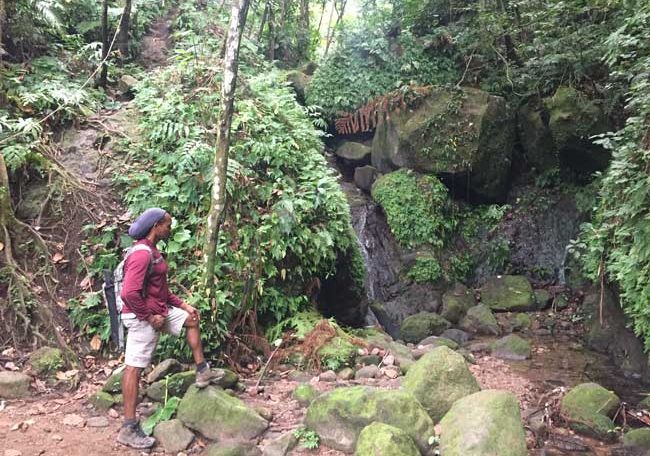
Though Nevis isn’t for everyone, the Caribbean island is popular with seasoned travelers who like raw nature and a relaxed way of life. Visitors are warmly received here, and those who take time to chat with the locals will discover a rich culture that fuses Amerindian and Afro-Caribbean traditions with remnants of its British past.
Reminders of that past can be seen in the island’s colonial architecture and the plantations that still dot the island. Many of the plantations have been restored as inns. This week, I’m staying at the Montpelier Plantation, a former 17th-century sugar plantation that has upscale cottages and excellent dining. A large sugar cane mill still stands on the grounds overlooking the sea.
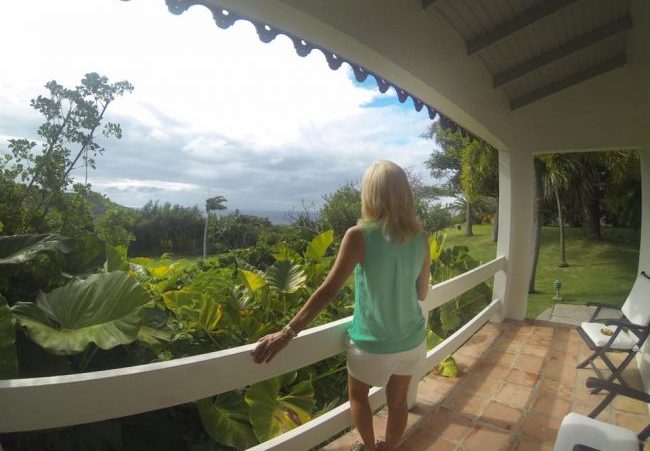
What to See and Do in Nevis
I’ve spent many hours relaxing at Montpelier, but I’m eager to explore Nevis. Most travelers rent cars during their stay here, but we’ve decided to use a local taxi service.
As Champ, our driver, scoots us around the island, I see why this was a good choice. He is a wealth of information.
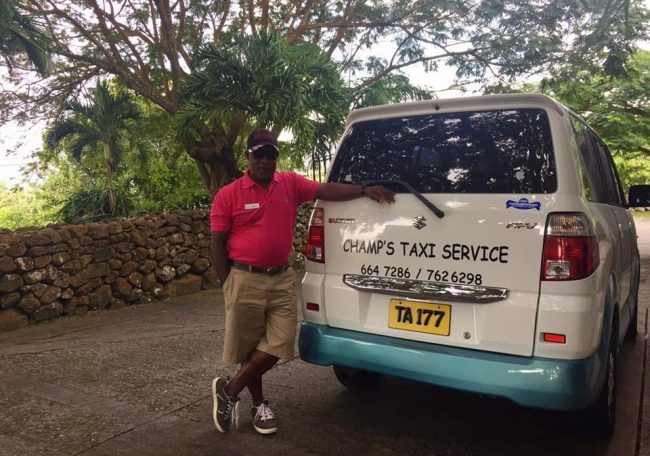
“Visitors always say how relaxed they feel here in Nevis,” says Champ, “how they like the flowers, the sea and the nice people. Taking people around I get to see the island through their eyes, and I’m reminded of what we have in Nevis.”
Champ has to keep his eyes on the road while he talks because animals roam freely all over the island. We pass wild donkeys and then herds of goats and sheep along the road. One time, we stop and wait patiently as a mama pig and her baby cross the street.
Following island tradition, Champ gives a little welcome honk to everyone he passes. I notice that most streets in Nevis have no street names or house numbers, but that’s no problem.
“As long as people can give me a villa name or a landmark, I can get folks where they need to go,” he says.”
And how does the postman deliver the mail when there are no addresses?
“Oh, that’s not a problem,” Champ says with a laugh. “The postman knows the names of most of the people who live on his route so he can deliver mail to them.”
Ah, the island life.
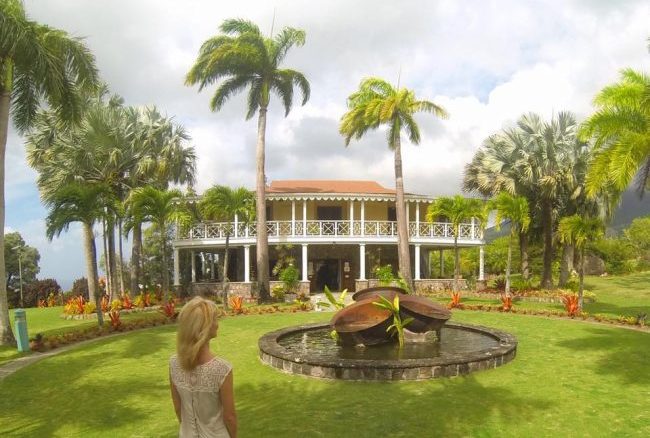
My time on Nevis soon turns into a welcome blend of new experiences and relaxing ways to unwind.
We visit the Nevis Botanical Gardens, a lush oasis created by Philadelphia couple Joseph and Martha Murphy. Their tropical rain conservatory houses tropical plants and Mayan-type sculptures, while the gardens have flora from around the world. My favorite part of the visit is the refreshing purple drink made from Free Butterfly Pea Flowers at their Oasis Restaurant.
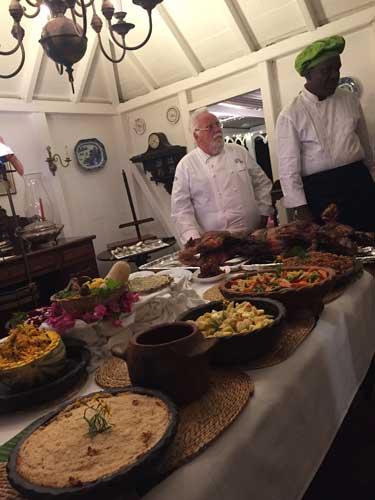
Dining in Nevis
Dining in Nevis is a pleasure, I find. Many of the island plantations serve special dinners weekly for locals and guests. One night, we attended a West Indian Pig Roast at Hermitage Plantation.
The buffet at Hermitage Plantation is so large that it barely fits on the huge center table. We sample local delicacies of sweet yams, curried Mahi Mahi, cheesy breadfruit and dishes baked in traditional clay pots.
Meals at beachside eateries like the Oualie Beach Resort and Sunshine’s at Pinney’s Beach are also just as delicious. Food tastes especially good when it’s served up with incredible seaside views. (Tip: Be sure to try Sunshine’s Killer Bee Rum Punch, but drink slowly, because it packs a punch!)
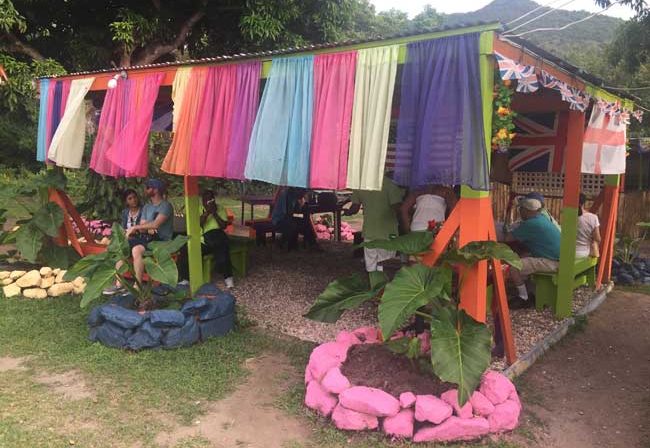
Nevis has numerous bars and restaurants, but small roadside pubs and bars have their own charm.
One example is Passion Bar and Grill, a tiny stand with an outdoor patio lined with colorful scarves. Rum punch is a mainstay on the island, so it’s what you drink when you’re in Nevis. Many locals make their own brand of moonshine, which they serve up for just a few dollars.
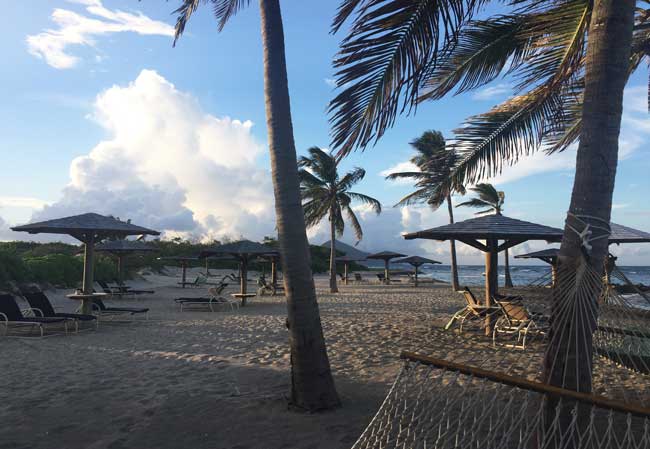
Beaches on Nevis
A big part of any island vacation is time spent at the beach, and Nevis has no shortage of beautiful places to lay a beach towel. One of the best-known beaches on Nevis is Pinney’s Beach, which runs for three miles and is just outside of the capital, Charlestown. Other beaches to visit include Oualie Beach, Paradise Beach and the Nisbet Plantation Beach Club, which also has an excellent restaurant.
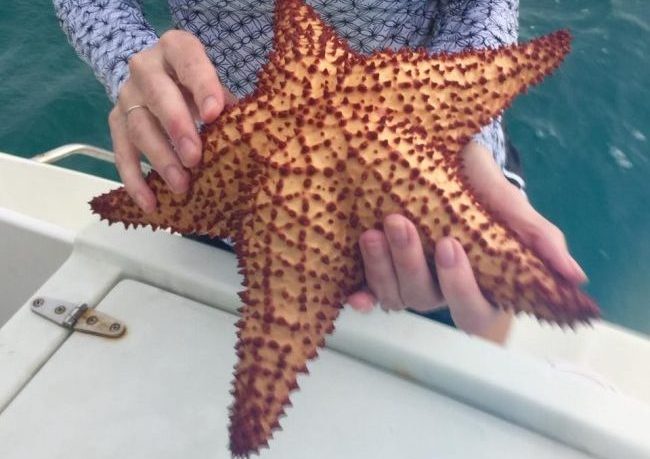
Diving and snorkeling are popular activities in Nevis. One afternoon, we head out to sea with Ned, who owns the Aquatic Recreation Centre. He shows us where bubbles stream from underground lava tubes, and points out vibrant sea life, including a large orange starfish.
Alexander Hamilton and Nevis
At the Museum of Nevis History, I learn of one of the island’s famous sons, Alexander Hamilton. The well-known American statesman was born on the island in 1757, and lived here till he was nine. The museum has an excellent exhibit about his life.
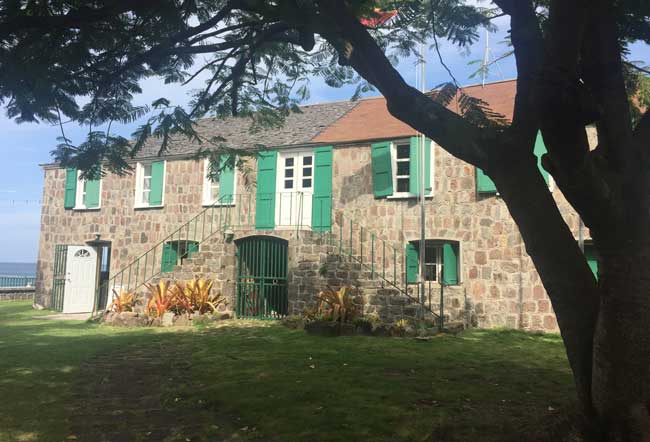
Near the end of my visit, Champ drives us to one other treasured part of the island’s history – St. Thomas’ Lowland Church. Built in 1643, it still stands high on a hill overlooking the sea. As we enter the church, I notice stone plaques on the walls honoring parishioners hundreds of years in the past. I wonder what life was like here then, and wonder about those who have called the island home.
St. Thomas is not just a relic of the past, I learn, it’s a still a living, breathing church. Locals attend here each week, as thousands have before them.
It’s that strong sense of community that I have witnessed here in Nevis.
When I mention that to Champ, he chuckles and nods his head.
“You know you’re only a stranger here once,” he says, and I hope that it is true. I’m already looking forward to my return.
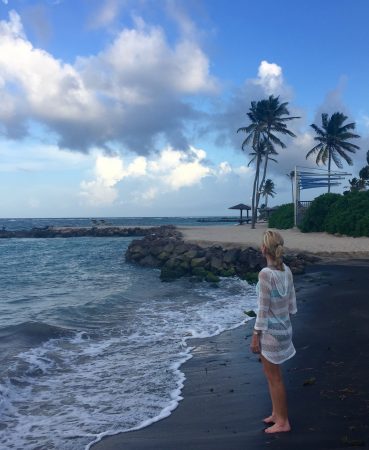
If You Go
Getting to Nevis
Most travelers arrive by air to St. Kitts then connect to Nevis by ferry. Another option is to fly to Antigua and then take a charter plane to Nevis. Direct flights from Puerto Rico to Nevis are also available.
Getting Around Nevis
Rental cars are readily available. Cars drive on the left in Nevis so most rental cars are right-hand drive.
Want to travel like a local? Buses are cheap and easy. Buses are small minivans with names painted on the front. They have green license plates starting with the letters H or HA. You can board a bus anywhere on the main road, just flag it down.
Taxis are another popular way to get around on the island. You can book directly with a taxi company or find one at the airport, at hotels and in Charlestown. Look for bright yellow license plates that start with the letter T or TA.
Where to Stay on Nevis
The island has many plantations which have been restored as boutique inns. I stayed at the Montpelier Plantation, a 60-acre property which sits on the hills overlooking the sea. The cottages are large and very comfortable. Several onsite restaurants serve guests throughout the day. Tip: If you have time, book a spa treatment. Treatments are provided on the grassy knoll overlooking the sea. The treatment area is surrounded by climbing flowers, adding a sweet floral scent to sea breeze.
For more information, see Nevis Tourism

